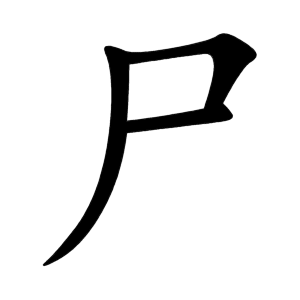尸
- corpse, dead body;
- a living person who represents the dead person during a rite;
Etymology
It is a pictograph depicting a person lying down horizontally, representing a corpse.
Usage in Korean
Characters with 尸
7 strokes
8 strokes
9 strokes
10 strokes
尸
주검
시
jugeom
si
Kangxi radical:44
Strokes:3
Unicode:U+5C38
Cangjie input:
- 尸 (S)
Composition:
- ⿰ 丿 コ
